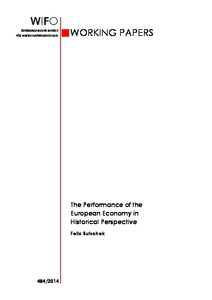The performance of the European economy in historical perspective
"The European economy was of central importance for the worldwide economic development. In pre-industrial times all cultures were agrarian with few cities and similar income. This situation changed fundamentally with the industrialisation of Europe, which caused great income differences. This p...
| Main Authors: | , |
|---|---|
| Institution: | ETUI-European Trade Union Institute |
| Format: | TEXT |
| Language: | English |
| Published: |
Vienna
2014
WIFO |
| Subjects: | |
| Online Access: | https://www.labourline.org/KENTIKA-19115638124919338109-The-performance-of-the-europea.htm |
| Summary: | "The European economy was of central importance for the worldwide economic development. In pre-industrial times all cultures were agrarian with few cities and similar income. This situation changed fundamentally with the industrialisation of Europe, which caused great income differences. This process started already in antiquity in Greece with a new type of man, acting in democratic structures and continued with the Roman rule of law and the autonomous medieval cities. With Humanism, Renaissance and finally Enlightenment there arose the scientific revolution which engendered technical progress. Given these preconditions Industrial Revolution started about 1800 and increased Europe's economic and technical capacity which caused its dramatic political predominance. In 1900 nearly 70 percent of world GDP was provided by Europe and its overseas offshoots. In spite of two world wars this situation did not change fundamentally, only the share of the offshoots rose dramatically. Beginning with the 1960s the secular process of catching-up set in. Most extra-European cultures started also industrialisation and increased their income. This development is supposed to continue and to reduce regional income differences. As a consequence the share of Europe in world GDP is expected to fall in future. But there remains the fact that the process of industrialisation was created by Europe." |
|---|---|
| Physical Description: | 40 p. Digital |

